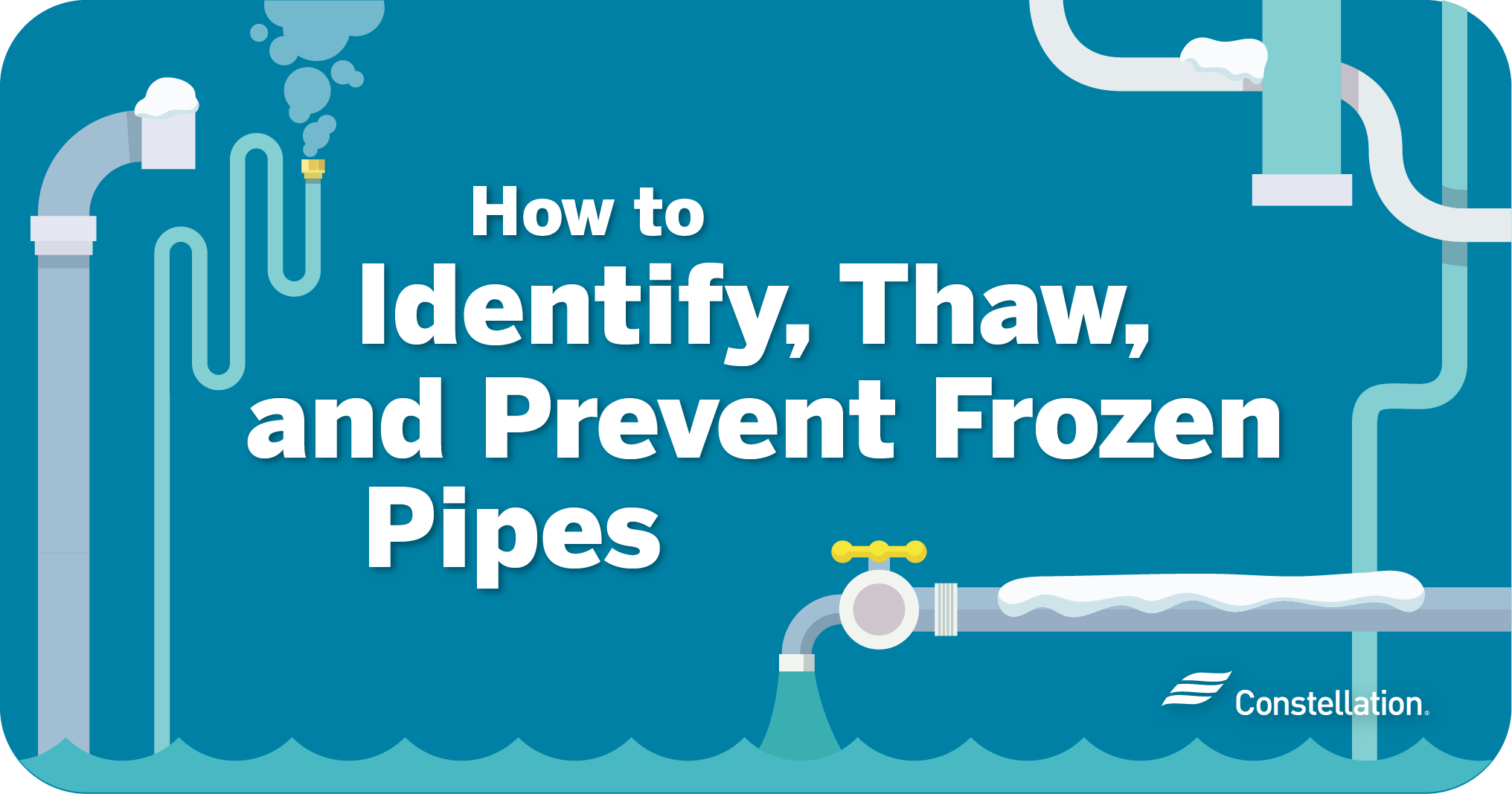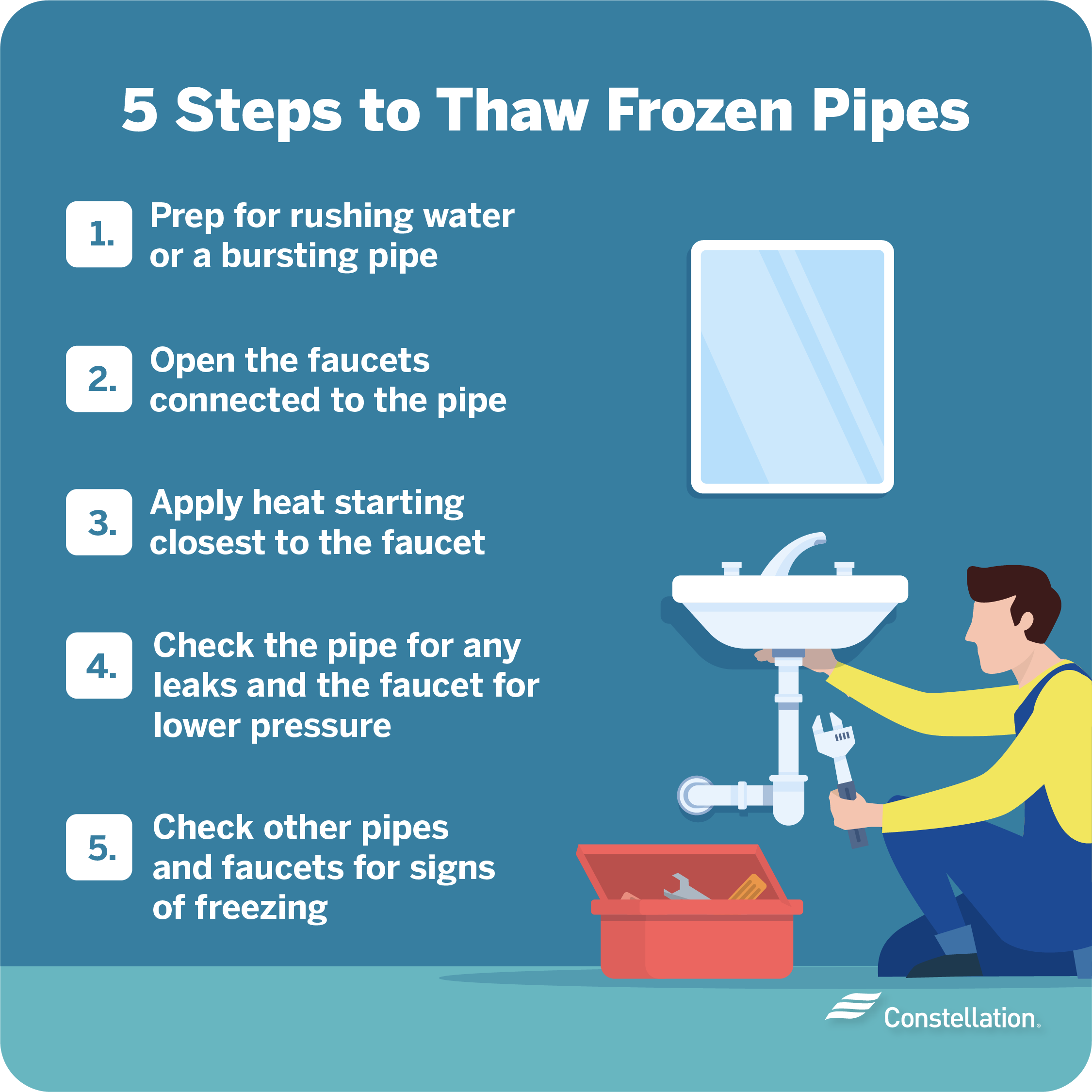
- Category:
Disaster Preparedness -
Last updated:
August 20, 2024
How to Identify, Thaw, and Prevent Frozen Pipes
Water pipes freezing. The words can make your blood run cold. Frozen pipes are a common winter problem. Here is how to prevent frozen pipes and what to do if pipes freeze.
How to Tell if Your Pipes are Frozen
During a deep freeze, pay particular attention to the possibility of frozen pipes. You may have a problem if only a dribble of water comes out when you turn on the faucet. You might also hear gurgling and banging as ice travels through your pipes. Freezing water expands, creating pressure, so you might see them bulge. Condensation and small surface cracks are also signs that trouble may be on the horizon. Less common is the presence of sewer smells caused by sewer lines freezing.
You’ll need to know what happens if your pipes freeze and how to act fast to prevent a burst pipe. Burst pipes can cause home flooding that can be a catastrophe. Home flooding is one of the most devastating and expensive emergencies you can face.
What to Do if Your Pipes are Frozen

If you haven’t done anything to prevent frozen pipes, you are at risk during a cold snap. Here is what to do if pipes freeze.
1. Prep for Water Rushing Out or a Burst Pipe
Shut off water flowing into the frozen area to reduce the water pressure in case there is a break. Be ready with towels and a bucket, as water can gush out when thawing. Being ready for a potential deluge is an important step in how to prevent flood damage.
2. Open up the Faucets Connected to the Pipe
Leave all faucets connected to the frozen pipe open up so that water can flow as you thaw the frozen pipe.
3. Apply Heat Starting Closest to the Faucet
Melt the water frozen in the pipe with great care. Start with the section of the pipe closest to the faucet so that water can flow out as you progress.
Use a portable space heater near the pipe or blow dryer moving up and down to warm the pipe. Wrapping the pipe with an electric heating pad or pointing an infrared lamp at the frozen section also works. Keep electric devices from getting wet and risking electrocution. Do not use open flame devices, like a kerosene heater or blowtorch. Never leave heat sources unattended.
While not as fast, towels soaked in hot water is a safe thawing technique. Change them often, as they can freeze as they come into contact with your frozen pipes.
4. Check the Pipe for any Leaks and the Faucet for Lower Pressure
What to do when pipes freeze only starts with thawing them. Once water is flowing, check for any damage or leaks. See if water flows normally. Because some damage isn’t immediately visible, you may want to call a plumber who can test for microscopic cracks and deformations that could cause trouble later. The plumber can also provide advice for how to keep pipes from freezing in the future.
5. Check Other Pipes and Faucets for Signs of Being Frozen
If you have one frozen pipe, it is possible you have more water pipes freezing. Check all visible pipes. If you find no other frozen pipes and see no damage, it is safe to turn your water back on. Check pipes frequently in case you have a slow leak or damage that develops once water pressure is restored.
How to Prevent Frozen Pipes
If you experience severe winter weather on a regular basis, investigate how to protect pipes from freezing in the future. It takes just six to eight hours for a pipe to freeze, so it pays to be diligent. Common strategies for how to protect pipes from freezing include:
- Insulating water pipes, especially those that pass through unheated outside walls and areas susceptible to cold like basements and crawl spaces.
- Consider adding insulation sleeves to inside pipes as well when winterizing your home.
- On extremely cold days, open all faucets to allow a trickle of water to flow. Moving water takes longer to freeze.
- Keep kitchens and bathrooms warm with the careful use of space heaters. Be sure to never leave them unattended.
- Open sink cabinet doors so that warm air can flow to the pipes more freely.
- Raise your home temperature to keep your pipes warm.
- If you have bathrooms you don’t use often, consider turning off water to them during a cold snap.
- Don’t forget your garage and outside faucets. Turn off water to outside spigots at the first sign of frost, as you are unlikely to need them. Keep your garage door shut and consider turning off a garage spigot in the winter.
- Inspect your pipes often during cold weather. On a particularly cold night, set an alarm for every five hours so you can check for problems and avoid waking up to a disaster.
- Regular maintenance is worth it. A good plumber can identify pipes that are most prone to freezing and protect them.
Learn More about Winterizing Your Home
Winterizing your home is essential to avoid issues like burst pipes. The article, How to Prepare Your Home for Winter, has solid advice for preventing problems, keeping comfortable, and controlling costs. Schedule a professional home inspection before winter arrives to identify problem areas.




